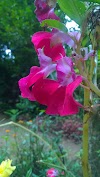The Blue Mountains, located just west of Sydney, Australia, are a breathtaking natural wonder known for their dramatic landscapes and diverse flora. This UNESCO World Heritage-listed region is home to a vast array of plant species, ranging from towering eucalyptus forests to delicate wildflowers. The unique climate, topography, and soil conditions of the Blue Mountains have contributed to an extraordinary variety of plant life, making it a haven for botanists, nature enthusiasts, and conservationists alike.
The Eucalyptus Forests
One of the most iconic plant groups in the Blue Mountains is the eucalyptus, with over 90 species found in the region. These towering trees dominate the landscape, creating the famous blue haze that gives the mountains their name. This phenomenon occurs when eucalyptus oils are released into the air, refracting light and producing a bluish tint. The eucalyptus forests provide essential habitats for many native animals, including koalas, gliders, and a variety of bird species.
Among the most common eucalyptus species in the Blue Mountains are the Blue Mountains Ash (Eucalyptus oreades), Mountain Blue Gum (Eucalyptus deanei), and the Sydney Peppermint (Eucalyptus piperita). These trees not only support the local ecosystem but also play a crucial role in preventing soil erosion and maintaining water cycles in the region.
Rainforests and Fern Gullies
Beyond the eucalyptus forests, the Blue Mountains are home to lush rainforests and cool fern gullies. These areas are typically found in sheltered valleys and along creeks, where the moisture levels are higher. The warm temperate rainforests feature towering coachwood (Ceratopetalum apetalum), sassafras (Doryphora sassafras), and lilly pilly (Syzygium smithii), creating a dense, green canopy.
The understory of these rainforests is often filled with ferns, mosses, and vines, providing a cool and humid environment for many native species. The delicate tree ferns (Cyathea australis and Dicksonia antarctica) are particularly striking, adding to the prehistoric feel of these forests.
Wildflowers and Heathlands
The exposed sandstone plateaus of the Blue Mountains support a range of heathland vegetation, particularly in areas with poor, sandy soils. This environment is home to vibrant wildflowers, such as waratahs (Telopea speciosissima), grevilleas, and boronias, which burst into color during spring and summer. These plants are adapted to the harsh conditions of the region, with many possessing tough leaves and fire-resistant properties.
Heathlands also provide vital food sources for native pollinators, including bees, butterflies, and honeyeaters. This biodiversity ensures the continuation of plant species and contributes to the overall health of the Blue Mountains ecosystem.
Conservation and Urban Impact
While the Blue Mountains flora is remarkably resilient, it faces threats from climate change, bushfires, and urban expansion. Increased tourism and development have also led to habitat fragmentation, making conservation efforts more critical than ever.
Interestingly, as more people visit the Blue Mountains from Sydney, there is a growing demand for local businesses, including eco-friendly services such as Sydney window cleaning. Clean windows offer breathtaking views of the surrounding forests, valleys, and cliffs, allowing residents and visitors to appreciate the natural beauty of the region.
By supporting conservation initiatives and choosing environmentally friendly services like Sydney window cleaning, we can help preserve the Blue Mountains' stunning landscapes for future generations.








